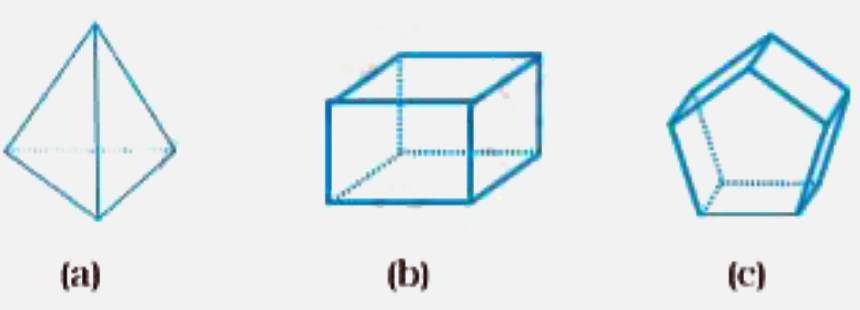Using Euler’s formula, find V if E = 10, F = 6.
Video Solution
|
Answer
Step by step video & image solution for Using Euler’s formula, find V if E = 10, F = 6. by Maths experts to help you in doubts & scoring excellent marks in Class 10 exams.
Updated on:21/07/2023Topper's Solved these Questions
- GEOMETRY MARCH 2015BOOK - GURUKUL PUBLICATION - MAHARASHTRA PREVIOUS YEAR PAPERSCHAPTER - GEOMETRY MARCH 2015EXERCISE - Solve any four sub-questions:
11 Videos
- GEOMETRY MARCH 2015BOOK - GURUKUL PUBLICATION - MAHARASHTRA PREVIOUS YEAR PAPERSCHAPTER - GEOMETRY MARCH 2015EXERCISE - Solve any three sub-questions:
7 Videos
- GEOMETRY JULY 2017BOOK - GURUKUL PUBLICATION - MAHARASHTRA PREVIOUS YEAR PAPERSCHAPTER - GEOMETRY JULY 2017EXERCISE - Solve any two sub-questions:
5 Videos
- GEOMETRY MARCH 2018BOOK - GURUKUL PUBLICATION - MAHARASHTRA PREVIOUS YEAR PAPERSCHAPTER - GEOMETRY MARCH 2018EXERCISE - Attempt any two sub-questions from the following :
6 Videos
Similar Questions
Knowledge Check
If 1f=1u+1v, then make v as the subject o the foormula. Also find v, if u=12 units and f=3 units
A4 unitsB19 unitsC9 unitsD14 unitsLenz’s law is expressed by the following formula (here e = induced e.m.f., ϕ = magnetic flux in one turn and N = number of turns)
Ae=−ϕdNdtBe=−NdϕdtCe=−ddt(ϕN)De=Ndϕdt
Using Euler’s formula find the unknown.
Faces ?,5,20 ,
vectices 6,?,12
Edges 12,9,?
View SolutionUsing lens maker's formula, derive the thin less formula 1f=1v−1u for a biconevex lens.
View SolutionName the following polyhedrons and verify the Euler’s formula for each of them.

View SolutionApply the Lagrange formula to the function f(x) = In x in the interval [1,e] and find the corresponding of ξ.
View SolutionEuler’s formula is true for all three-dimensional shapes.
View SolutionDerive the lens formula 1f=1v−1u for a concave lens, using the necessary ray diagram.
View Solution

